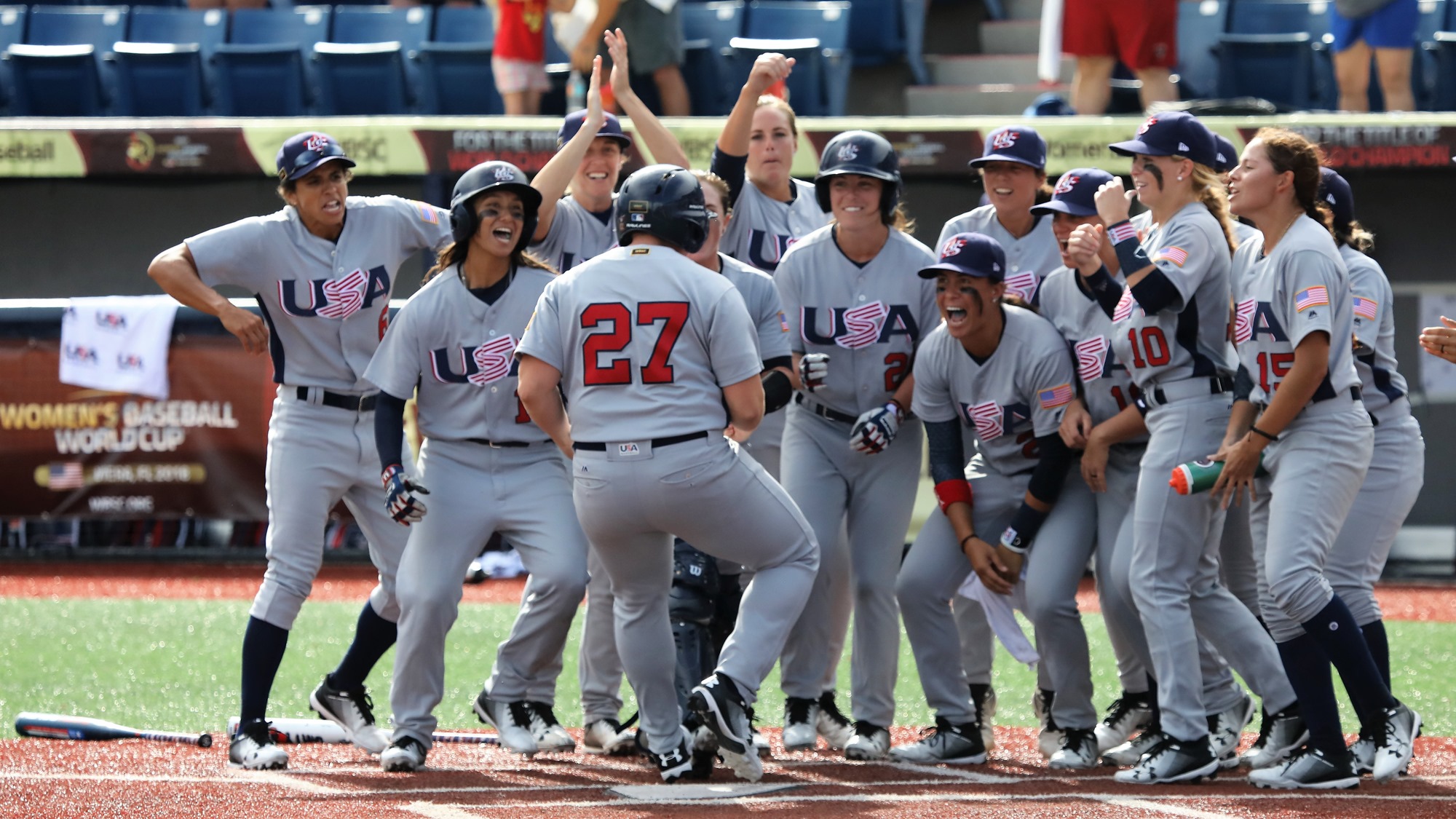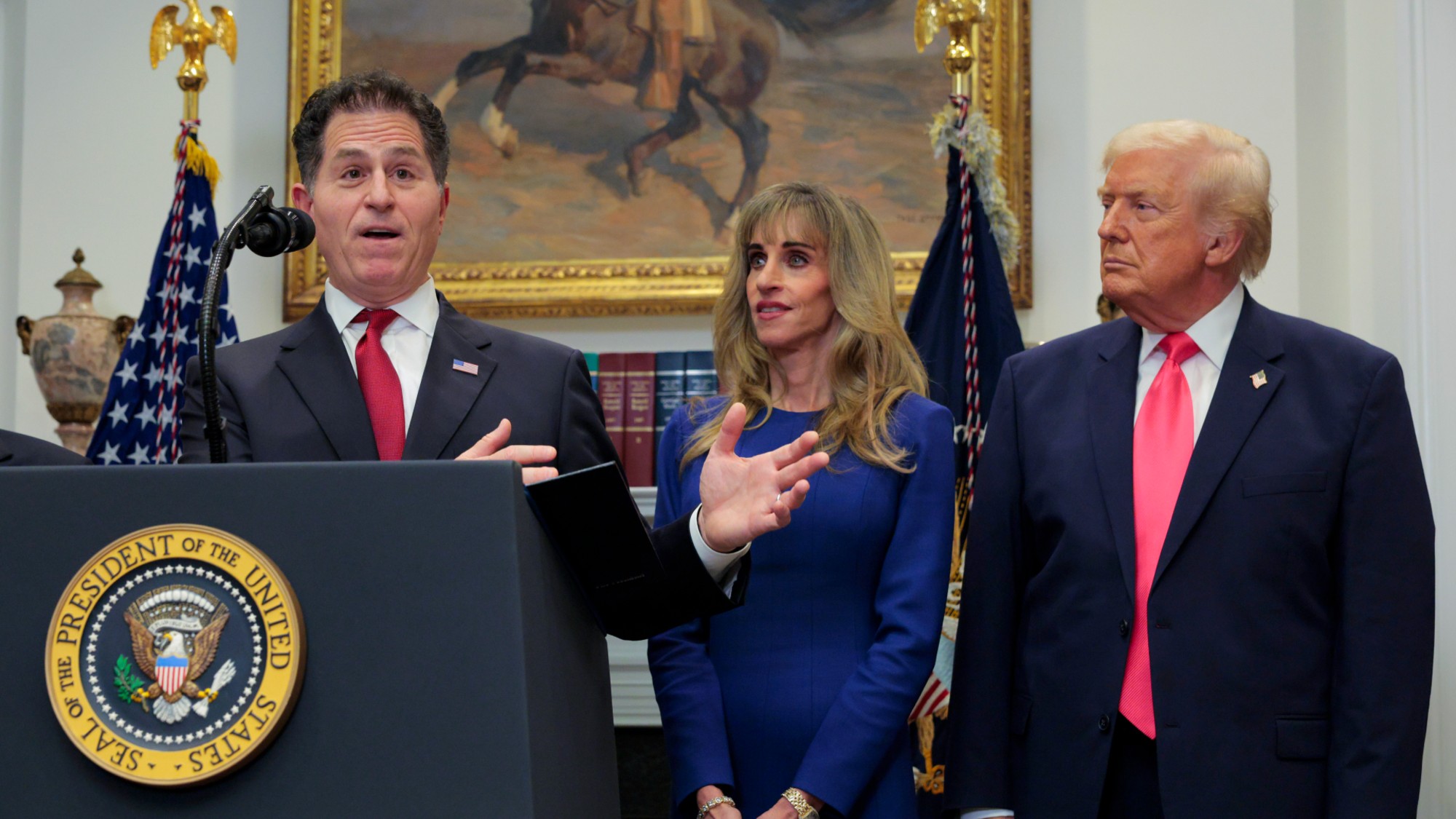The radical uniforms of the Women's Baseball World Cup
If it weren't for the occasional braid or ponytail, you would have no way of knowing that Team USA is made up entirely of women


If it weren't for the occasional braid or ponytail swinging out from under a ball cap, you would have no way of knowing that Team USA is made up entirely of women. From a distance, the ballplayers' uniforms make them look almost interchangeable with any member of the U.S. men's team — and in their away-game greys, they look almost like the Detroit Tigers. Some wear their socks high, others prefer the more modern look of low pants. Many swipe on under-eye grease, which, in the swampy air of Viera, Florida, tends to get runny. All, of course, have belts and caps and gloves, the giveaway fashions of America's national pastime.
Most people don't even know women play baseball, much less that a team of American women is competing in an international baseball tournament. But they do, and they are — at the 2018 Women's Baseball World Cup tournament, where 12 national teams from around the world are competing for gold.

Part of this ignorance is due to the pervasive misunderstanding that baseball is a sport exclusively for men. Women, it is assumed, play softball — a sport that is considered (at least historically by Title IX) to be baseball's equivalent, although it is an entirely different game. In addition to not having overhand pitching, balks, steals, or pick-offs, "the softball diamond and outfield are smaller than in baseball," notes Jennifer Ring in her book Stolen Bases: Why American Girls Don't Play Baseball. "In fact, they are approximately the size of a Little League baseball field, giving the clear impression that grown women are only as big, fast, and powerful as 6- to 12-year-old boys."
The Week
Escape your echo chamber. Get the facts behind the news, plus analysis from multiple perspectives.

Sign up for The Week's Free Newsletters
From our morning news briefing to a weekly Good News Newsletter, get the best of The Week delivered directly to your inbox.
From our morning news briefing to a weekly Good News Newsletter, get the best of The Week delivered directly to your inbox.
Softball, which was considered safer for women who might, God forbid, damage their faces and require cosmetic surgery if they played hardball (an actual argument that was made), has historically also tended to look more feminine. In the 1970s, during a struggle over integrating girls into Little League, slow-pitch softball was offered as an alternative, complete with World Series short-shorts that the authors of Play Ball! The Story of Little League Baseball observed made "the players look more like Rockettes."
This is part of an unfortunate trend. For decades, the most successful athletic women have played in sports that go out of their way to highlight their femininity. It remains true today: Of the top 10 highest earning female athletes in 2017, all but two are tennis players, a sport in which the traditionally expected attire involves a skirt. In the Olympics, gymnasts, ice skaters, and ice dancers get the most media glory, and they are often in ultra-feminine costumes.
Which brings us back to baseball.
Baseball has not always been the manly "war" of a sport some people want it to be. In fact, its earliest origins date back to schoolyard games played by both boys and girls. But from the mid-1800s to quite recently, baseball was defined by men, who felt both threatened by women players exerting themselves and hoping to be aroused by the sight.
A free daily email with the biggest news stories of the day – and the best features from TheWeek.com
For instance, although some early feminists scandalized crowds by donning bloomers, most female players in the 1800s — and there were more than you think — took to the field in dresses. This posed obvious challenges: Lady players in Pensacola, Florida, were reportedly expelled from their local club in the 1860s if they fell during a game after getting caught up in their hoop skirts.
Even the heroes of the All-American Girls Professional Baseball League in the 1940s — immortalized in the 1992 hit movie A League of Their Own — were told to make sure there was no confusion about them being women when they walked out on the field, however inconvenient or unnatural it felt to some of the athletes. Their uniforms were "designed to be appealingly feminine," writes Jean Hastings Ardell in Breaking into Baseball: Women and the National Pastime. That entailed "tailored tunics that ended above the knee, satin shorts, and knee socks." The women of AAGPBL were even "taught to scratch a bar of soap to avoid dirty fingernails."
That's why it's so refreshing to see that for most women in uniform at the 2018 World Cup, their appearance is of little thought beyond it connecting them to the team and their country. Australia's star-spangled Oakland A's-esque away uniforms connect to its team-voted name, the Emeralds, pitcher Kim McMillan told me. Beyond that, the clothing emphasizes her place on the team; because of an established system of women's baseball leagues down under, the national team is culled from the best players from each state; wearing Aussie Green for McMillan means proudly representing New South Wales.
When I asked explicitly about the uniforms, Team USA outfielder Alexandra Hugo seemed almost confused by the question. She had not given it much thought — she wears her socks high, she told me, because she's seen MLB players do it and she likes it.
It needed no more explanation than that.
Jeva Lange was the executive editor at TheWeek.com. She formerly served as The Week's deputy editor and culture critic. She is also a contributor to Screen Slate, and her writing has appeared in The New York Daily News, The Awl, Vice, and Gothamist, among other publications. Jeva lives in New York City. Follow her on Twitter.
-
 Can Mike Johnson keep his job?
Can Mike Johnson keep his job?Today's Big Question GOP women come after the House leader
-
 A postapocalyptic trip to Sin City, a peek inside Taylor Swift’s “Eras” tour, and an explicit hockey romance in December TV
A postapocalyptic trip to Sin City, a peek inside Taylor Swift’s “Eras” tour, and an explicit hockey romance in December TVthe week recommends This month’s new television releases include ‘Fallout,’ ‘Taylor Swift: The End Of An Era’ and ‘Heated Rivalry’
-
 ‘These accounts clearly are designed as a capitalist alternative’
‘These accounts clearly are designed as a capitalist alternative’Instant Opinion Opinion, comment and editorials of the day
